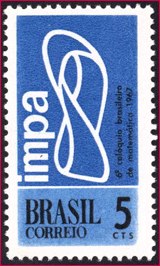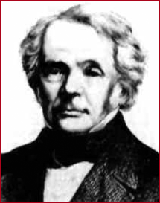-33
Y:
-33
|
Background
for
the student. . . .
Significance
of the Möbius Strip We suggest you make a Möbius strip by cutting a band of about two inches in width and at least 15 inches in length. Give the band a half twist, and re-attach the two ends. Then draw a line down the middle of the band. With scissors, cut the band along the pencil mark. Voilà! One long cut produces two divisions but results in only one new band. The half-twist results in a one-sided surface. Cutting a Möbius strip, giving it additional twists, and reconnecting the ends produce figures called "paradromic rings" that are studied in topology. There is an additional "twist" to the history of the now famous strip. In 1847, Johann Benedict Listing published Vorstudien zur Topologie. This was the first published use of the word "topology." Nearing bankruptcy in 1858, largely due to a wife who could not control her spending, Listing discovered the properties of the Möbius strip at almost the same time as, and independently of, Möbius. His publication included the results of various twists, half-twists, cuts, divisions and lengths. Four years later he extended Euler's formula for the Euler characteristic of oriented three-dimensional polyhedra to the case of certain four-dimensional simplicial complexes. Today, a far larger audience of mathematicians now knows the name of "Möbius" and can recall the Euler Formula. For related topics, a student should also investigate the extensive literature on the Klein Bottle, Roman Surface, Boy Surface, Cross-Cap, and Torus. |

Brazil |
|
 1790 - 1868 |
